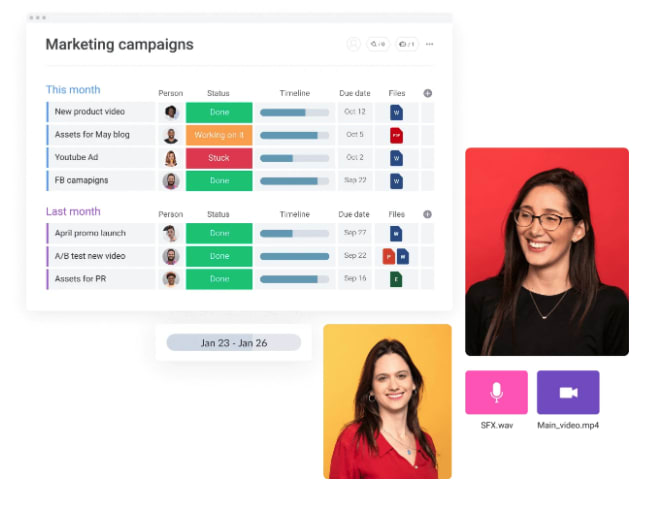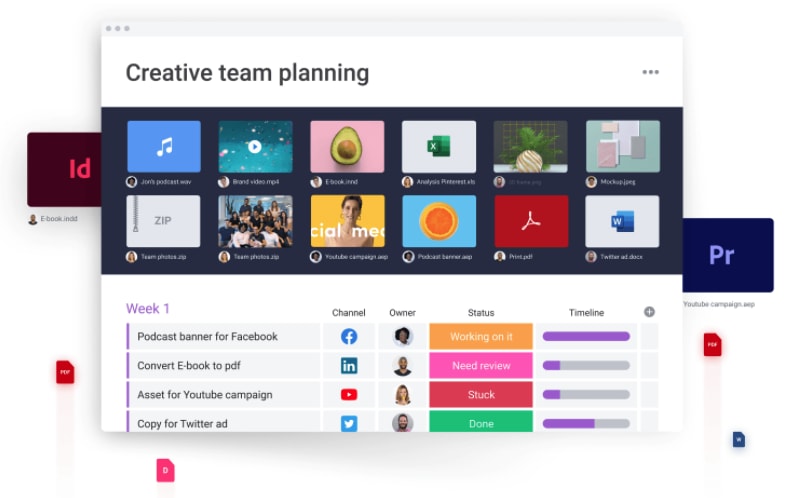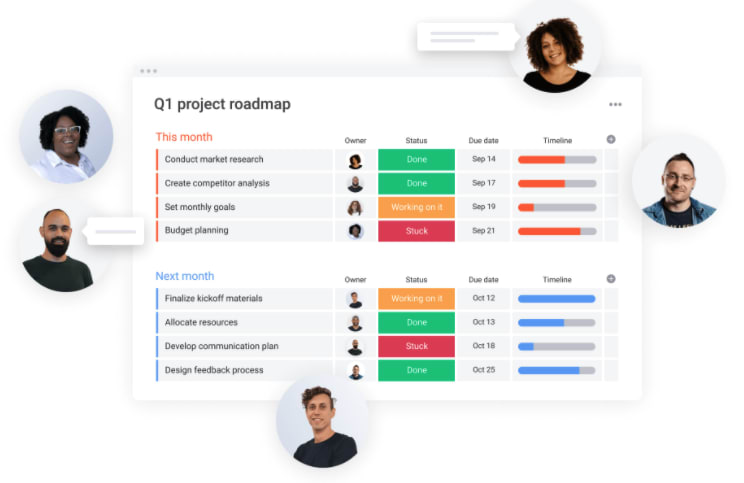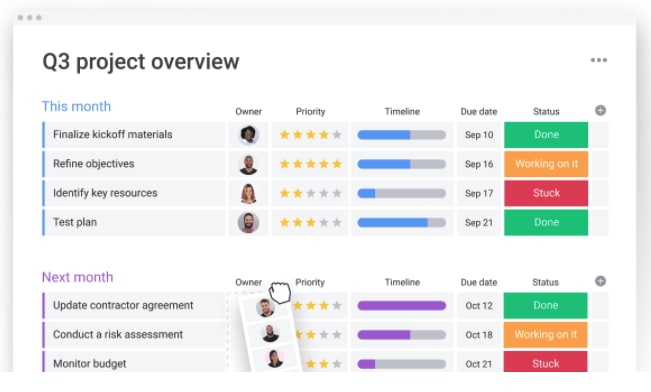You may think that ‘planning’ and ‘design’ are mortal enemies.
The former, a strict librarian type who hates fun and freedom, and the latter, a free-flowing hippie type who can’t stand structure and discipline.
Well, in a business context, the fact of the matter is that one cannot exist without the other.
And truthfully, the 2 concepts quite often need each other when it comes to delivering high-value content.
Only when you plan thoughtfully can creativity in design flourish. Marrying the 2 is an art form in itself.
To turn that art into a science, we have the notion of design planning.
In this article, we’re going to run through the core principles of design planning and guide you on how to execute it effectively, so they can be best friends forevermore.
What is design planning?
Design planning, also known as design management, is essentially the practice of taming the wild beast of creativity for application in business contexts.
Design planning could be described more broadly as a field of inquiry that draws upon the principles of project management, organizational strategy, and collaboration to control a creative process.
In the contemporary business landscape, design underpins everything a consumer-facing business does.
Branding, product design, web design, packaging, advertising, social media — the list goes on and on. Design is a language that a business needs to be fluent in if it wants to compete effectively. To that end, excellent design has become the new standard.

Which brings forth a daunting challenge — how do you ‘operationalize’ the design process for design fluency? Whether your design efforts are internal or external, how do you, as a manager, delegate the task of design in a way that maximizes creative quality along with efficiency?
The design process has a few inaccurate perceptions that make it difficult for businesses to effectively navigate, which include the following.
Myth #1: design is too abstract/unpredictable to plan effectively
Both designers and managers struggle to see how their respective fields can gel with each other when it comes to executing a project. Creative design needs room to breathe, inspiration, and experimentation. Project planning demands deadlines, deliverables, and strict criteria.
In reality, the 2 disciplines work synergistically with each other. Relying on bouts of spontaneous inspiration is never a good strategy. Doing creative work within pre-set schedules and routines is the choice of some of the world’s greatest creatives for a reason!
Myth #2: business constraints hamper creativity
It’s commonly thought that the exacting demands of business operations work to hamper creativity among designers, such as time restrictions, key performance criteria, or strict brand guidelines.
It appears, though, paradoxically, that more rules and limitations for creative work often result in higher-quality output compared to totally unrestricted creative time.
This is called ‘the green eggs and ham hypothesis,’ which suggests that the success of Green Eggs and Ham is owed in part to the limitation of using only 50 words.
So, with key misconceptions about the odd-couple of design and business planning out the way, let’s get down to actionable tips and tricks for effective design planning and management.
What are the essential design planning principles?
Fundamentally, design planning demands 3 things of business managers and design teams:
- Bringing design strategy in line with corporate strategy
- Ensuring consistent quality of design deliverables across all channels
- Working to heighten the quality of design outputs across all channels
Let’s take the launch of a new product — say, a foldable bike — as an example.
For product design, the engineering team must cooperate with the broader corporate ideals that underpin the company’s ethos and other products. This might mean the use of a certain durable material and limiting design options in, say, the color palette.
Then it’s over to graphic design, where the bike is advertised in a campaign that covers the physical and digital spectrum. Ensuring consistency in the product imagery, branding, and typography is essential for successful recognition and recall of the product and brand. If applicable, creatives can implement the latest graphic design trends to create eye-catching materials.
Finally, the post-mortem. Managers must assess what aspects of the design outcomes went right and what missed the mark. Conclusions from this should be implemented into the next round of design planning.
The common determinant of success across all 3 design planning principles can be boiled down to the style and quality of communication between departments.
In the digital age, we have reached a new paradigm of work organization and collaboration.
Some tools and technologies can be transformative to the fluency and effectiveness of organizations, and can even help overcome the innate tension between creativity and productivity.
Here are 3 essential features of said tools and technologies that will help you level up your team’s design planning.
Collaborate and brainstorm ideas
How can you replicate the ease and fluidity of blue-sky thinking in the digital space? It’s been a bane of the digital work platform industry for a while.
Well, the revolution has arrived, and now there are software tools that allow multiple teams to share their ideas and inspiration, then quickly convert the results into a focused project ready for execution. It is design planning fully realized. Thanks, tech wizards!
monday.com: your digital meeting room
Our Work OS was designed to make collaboration flow like water. That’s why we paid special attention to our search and file share functionality, where you can drop in design inspiration and references, search through all files, and give feedback in the same place.

Creating a digital design spec
Design briefs are difficult to get right and aren’t complete without a little bit of back-and-forth between managers and designers. This eliminates any gaps in knowledge that either department may have about each other’s realm of technical expertise.
It’s also what makes them more suitable in digital applications than physical. Whiteboards simply don’t cut it anymore, and digital design specs allow ultimate flexibility and adaptability if the design is done at another location or in a different time zone.
monday.com: where designers and managers coexist
monday.com is a ‘Work OS,’ and when you see how intricately we can connect different departments of a business, you’ll understand why!
On monday.com, you can quickly set up customizable workspaces that can connect designers and managers in meaningful ways. Set design criteria, establish deliverables, and smoothly discuss finer details in one place for the perfect design spec with no stress.

Plan and schedule design
When goals are in place, the design team is on the same page as management, and the deliverables are set — it’s time to get going with the design, whatever that may be.
You may already know by now that management has been transformed by the emergence of project and team management software tools. With the pressure of a certain virus, remote working and management has become the new norm, and the tech behind it is better than ever.
This bodes well for design planning, offering a comfortable distance between the designer and manager that allows for both effective delegation and creative freedom. It’s truly the best of both worlds.
monday.com: THE work operating software
We saved the best for last because monday.com isn’t only capable of efficient and effective design planning.
Far from it.
We are the most comprehensive ‘Work OS’ platform in town. From managing small projects to massive multinationals, we have the capabilities to make managing easier, more automated, and more collaborative than it has ever been before.
You can design intricate workflows, create dependencies for tasks, assess project progress under different visualizations, and keep track of it all anywhere you go.
Suddenly, proper design planning feels like a simple undertaking.

monday.com: designed for creativity
monday.com is one of the only places you can go to tie together every element of the design management and planning operation in one place.
Our ability to bring departments together is like none other, and everything is accessible to everyone thanks to our intuitive design and drag-and-drop simplicity.Brainstorm design ideas, create design specs, manage progress, notify the planner when things get completed, or the designer when things need a second look. And you can do all of this under one roof.
Don’t believe us? Throw open our Design Tasks Template and see for yourself!
Ready to start planning?
Design planning demands a lot from different types of people in your organization. It draws upon project management, organizational strategy, and collaboration. This is only becoming more important as companies become more visual and experiential.
Embrace the challenges it represents by understanding common misconceptions regarding creativity and productivity. Then work that into your strategy.
You can make good software your best friend while setting the tracks for the design train to roll on through. You will save time, headaches, and design disasters when everyone is of one mind.
Curious to see how your design planning would look on our site? We offer a 14-day free trial to get a taste of the new paradigm of design management, so feel free to check it out!


